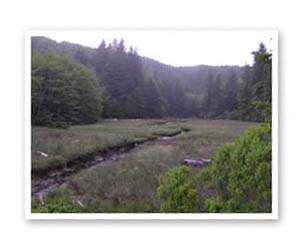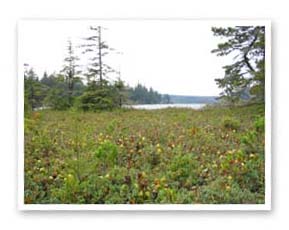 INSTITUTE FOR NATURAL RESOURCES
INSTITUTE FOR NATURAL RESOURCESYou are here
Wetlands
Landscapes and Ecosystems
- Intro
- Planning Resources
- Research Projects
- Articles & Stories
- Maps & Tools
- Reports & Publications
- Data
- Photos & Videos
- More
How to Determine the Type of Wetland Rehabilitation Project to Undertake
All of the previous steps have provided clues to your sites condition. You now know of significant drainage activity and other alterations to your site; what it may have looked like prior to the changes; and whats on deposit in your seed bank. This information will be used to decide what type of project to do. In broad terms, there are three possibilities:
Wetland is not degraded and should be conserved and managed. You may have discovered that your wetland is relatively diverse and not significantly altered. If it supports a native plant community, you have something of great value worth preserving and protecting on behalf of native wetland plants, mammals, amphibians, reptiles and birds. The site may require some management and little else. The use of fire, brush cutting, mowing or other management activities may improve the wetlands condition. You may also want to consider planting an upland buffer with native species to increase wildlife habitat and use in the area surrounding your wetland.

Poole slough estuary, Yaquina |

Ian Peterson-Nedry Preserve, |
Wetland is degraded but can be rehabilitated. The site may have undergone significant changes such as draining or cultivation, and currently supports little to no native wetland vegetation. In the process of researching your site, you have uncovered the artificial drainage features and now have enough information to plan the project. You may need a land survey to determine whether neighboring lands will be affected when you restore the hydrology to original conditions.
Wetland is very degraded and cannot be readily rehabilitated. If your site lacks drainage features such as ditches or tile lines, there may be nothing you can do to restore the hydrology short of massive excavation. An example would be in the case of a small, shallow wetland now filled with sediments and no longer supporting wetland vegetation. Excavation could also be fruitless if the water table has been drawn down on a site.
Finally, in determining the potential of your project, you will also need to consider whether project activities could cause problems for your neighbors, especially if they alter the movement of water on their land. You may own only a part of the entire original wetland, and would need to join in partnership with your neighbors to restore a larger site to ensure that the hydrology is adequately restored. Another option is to wait for neighboring land to come up for sale. Eventually, you may wish to consult with an expert to establish what options are available to you.











